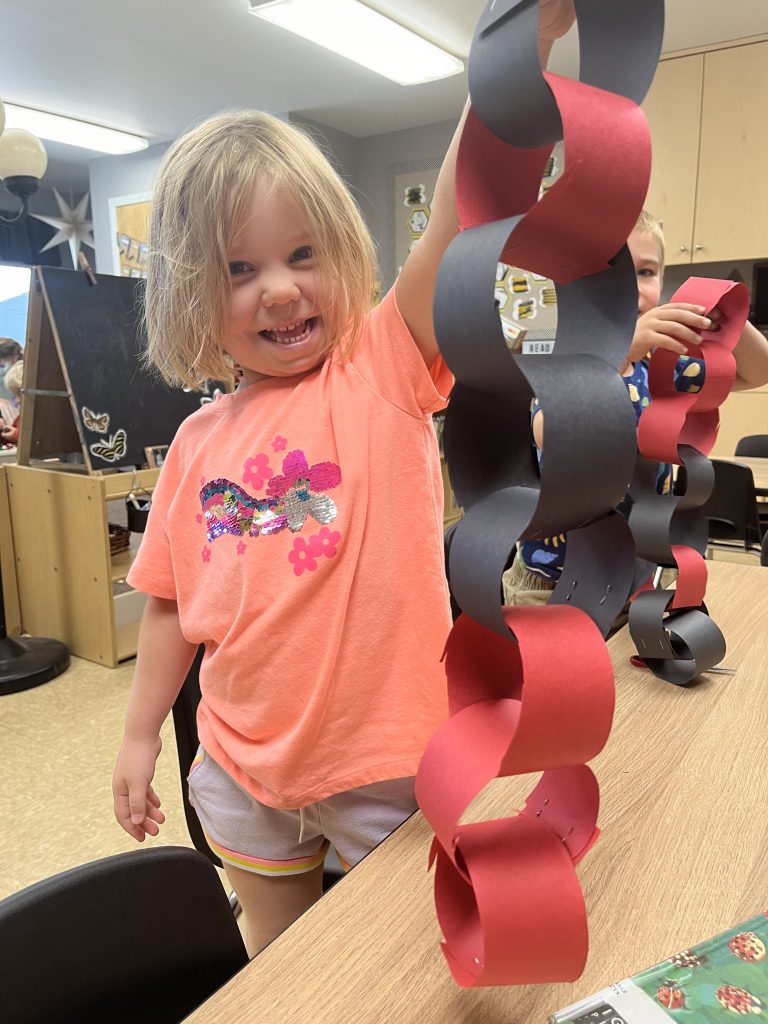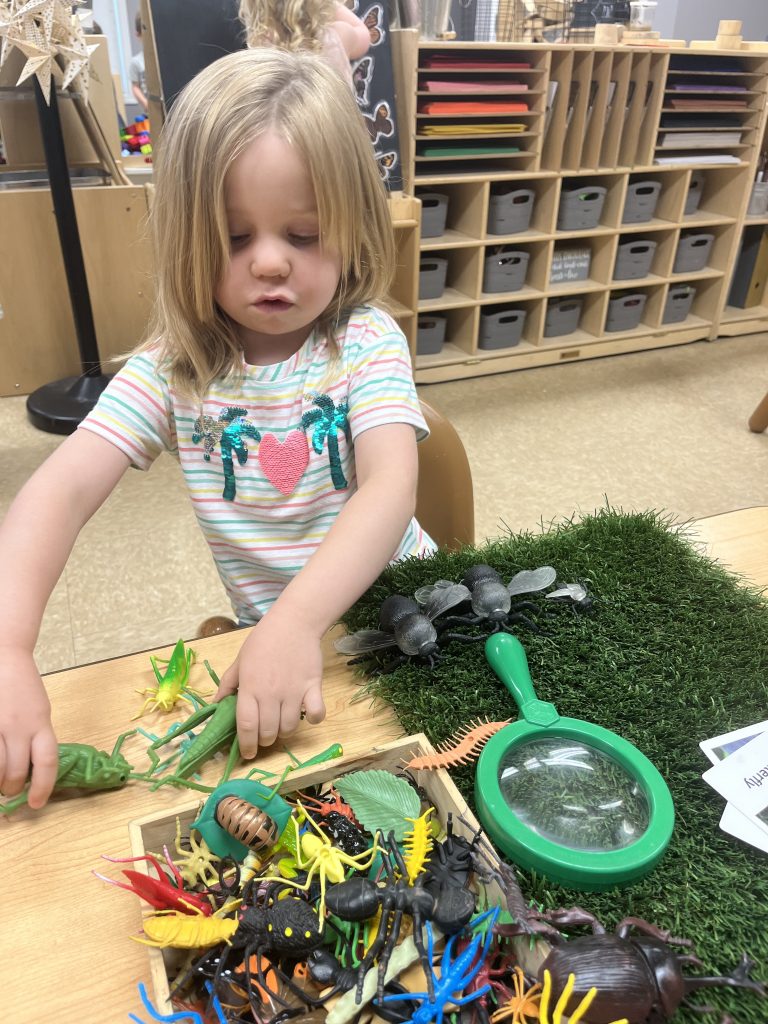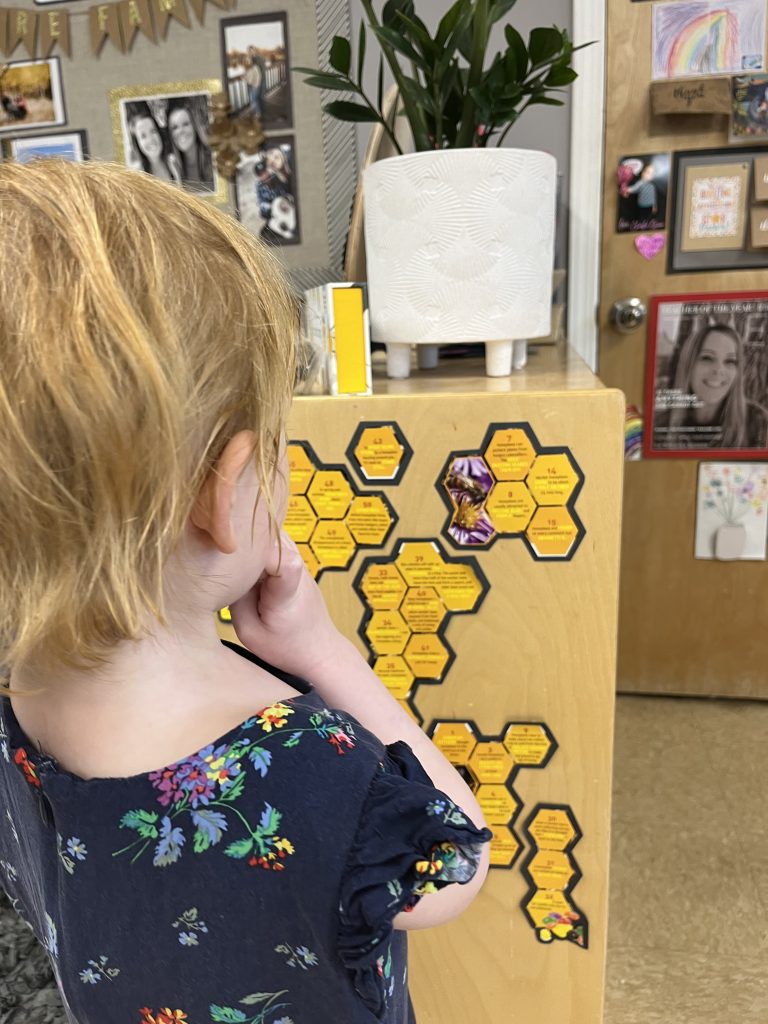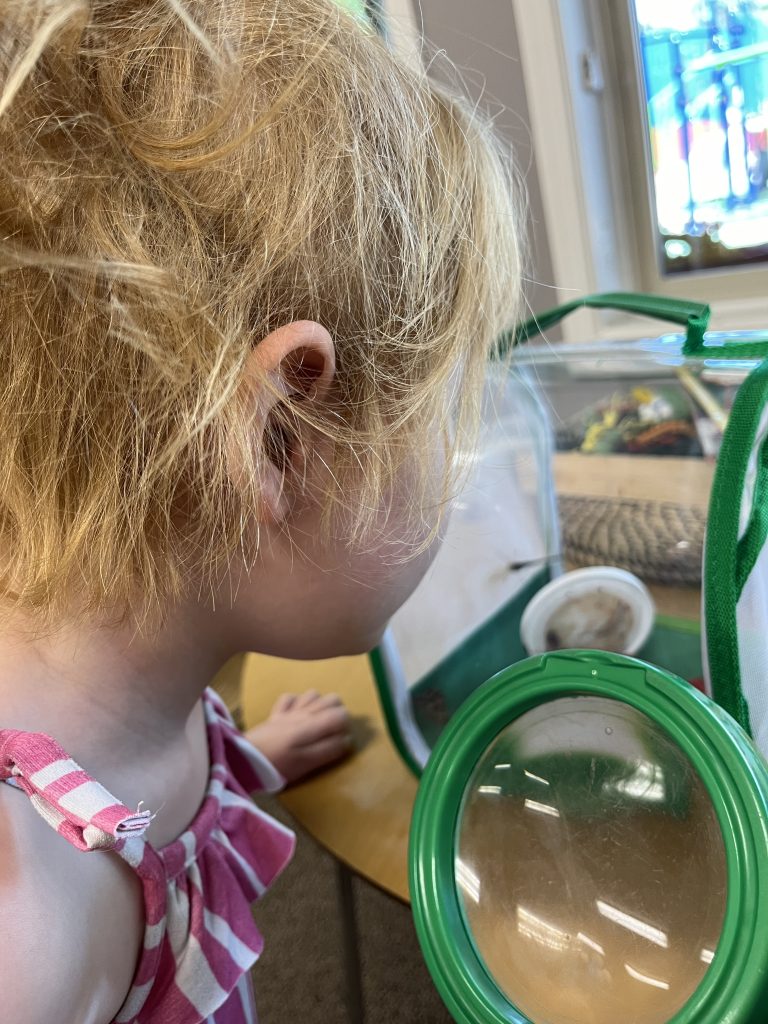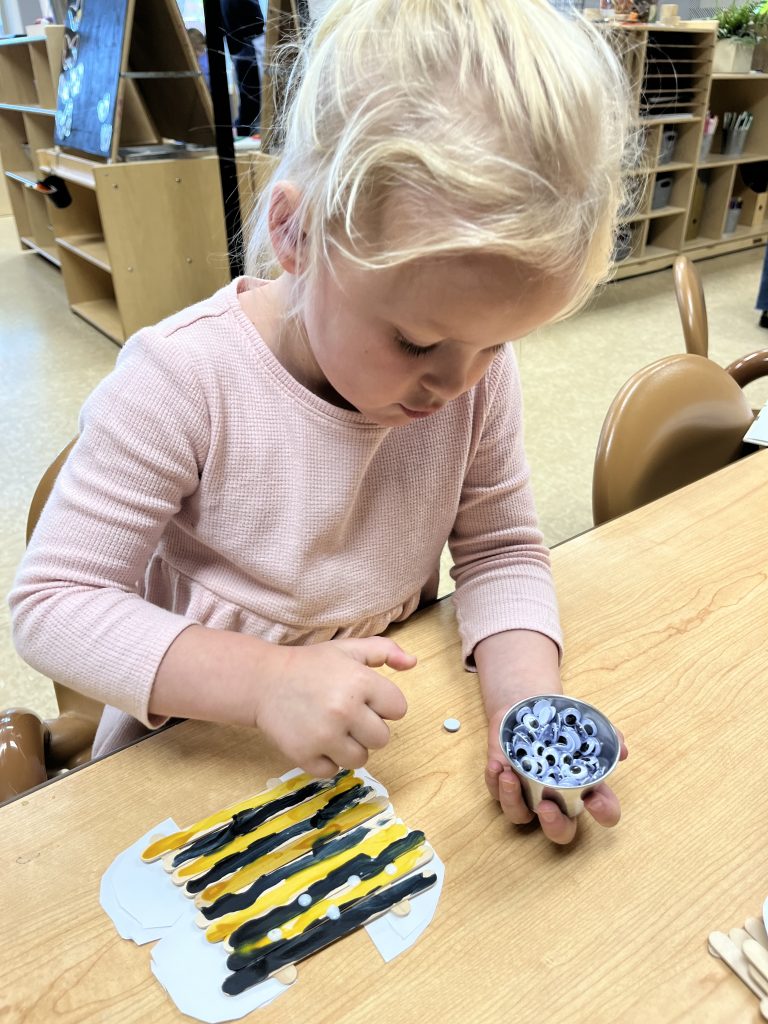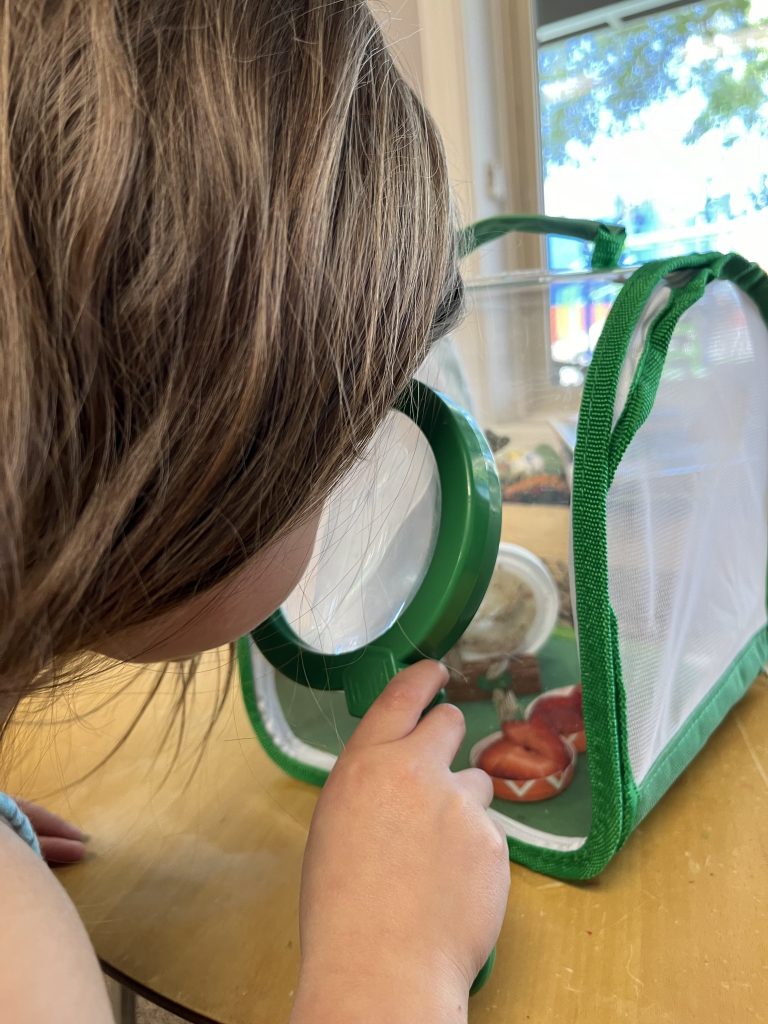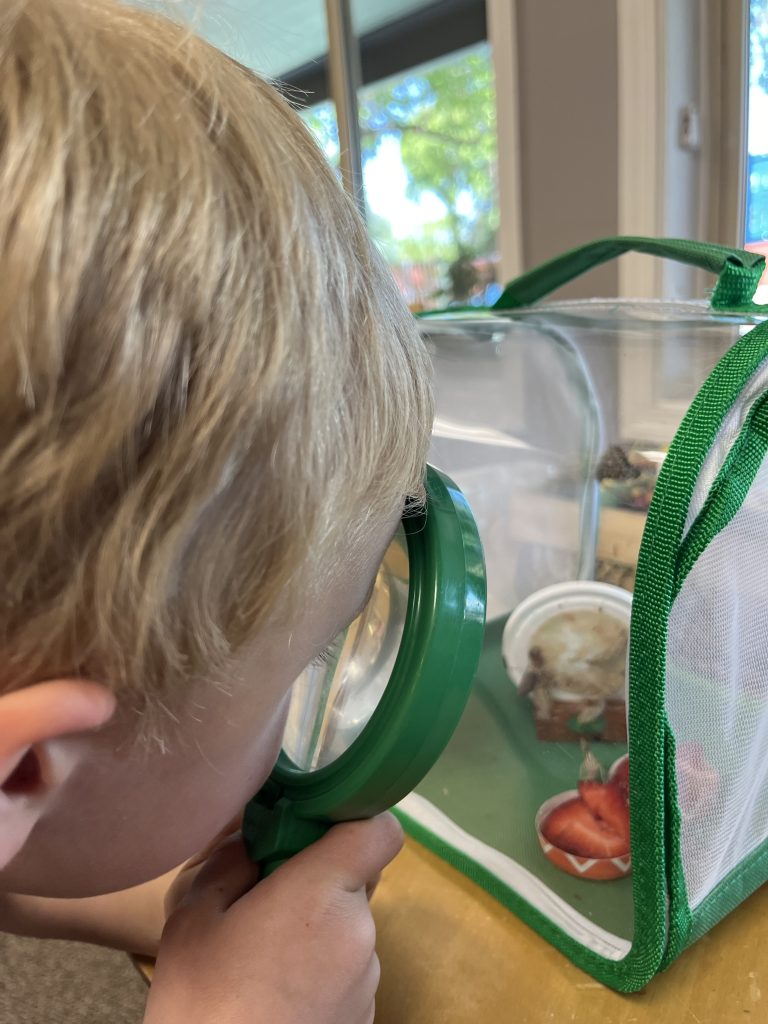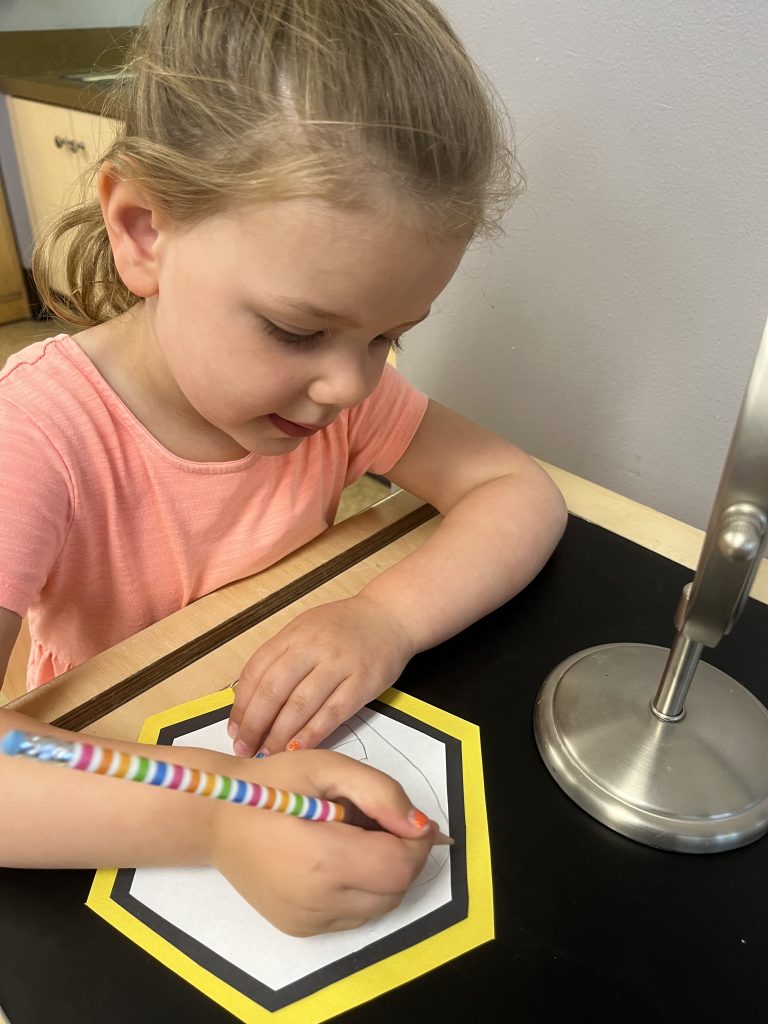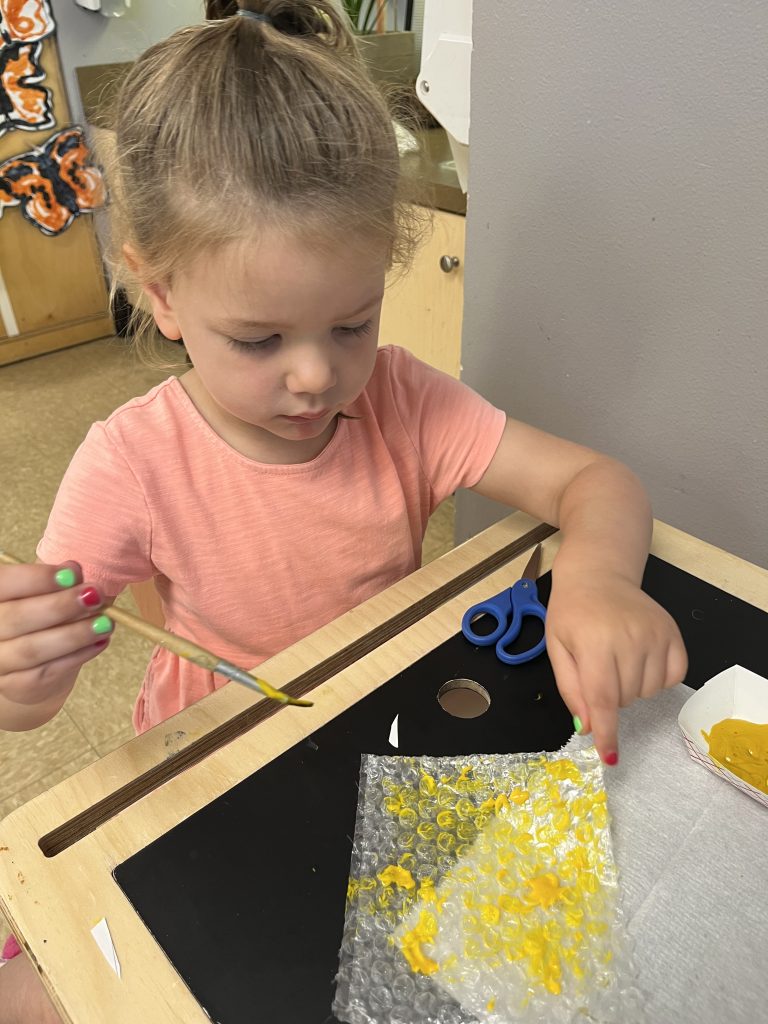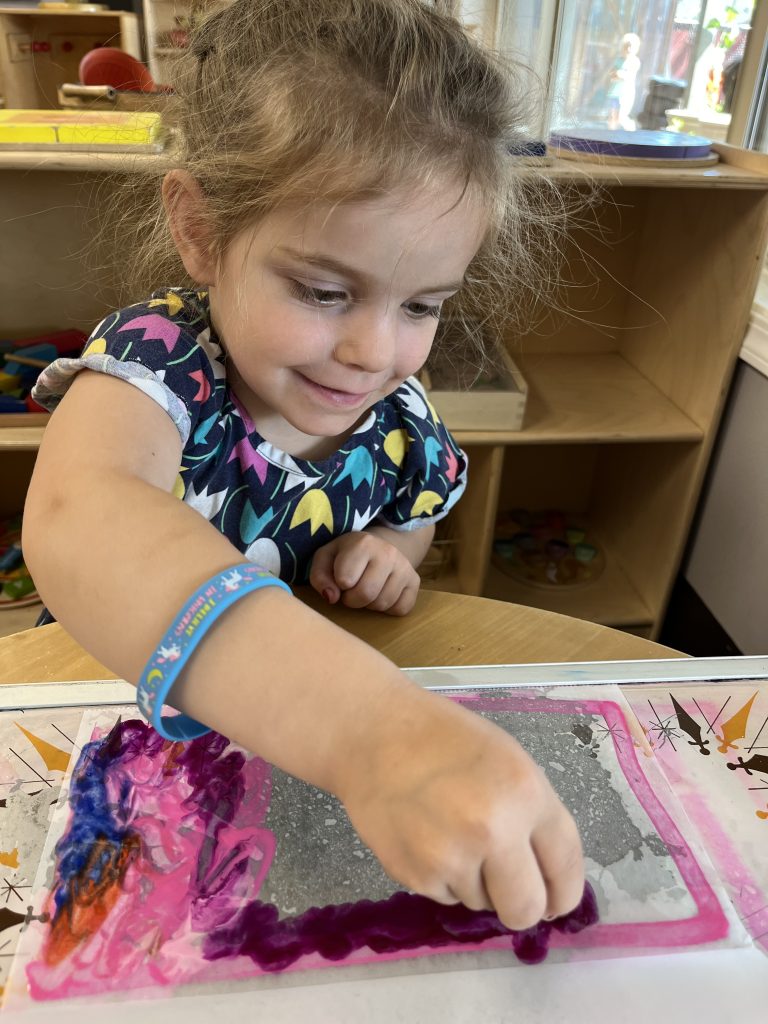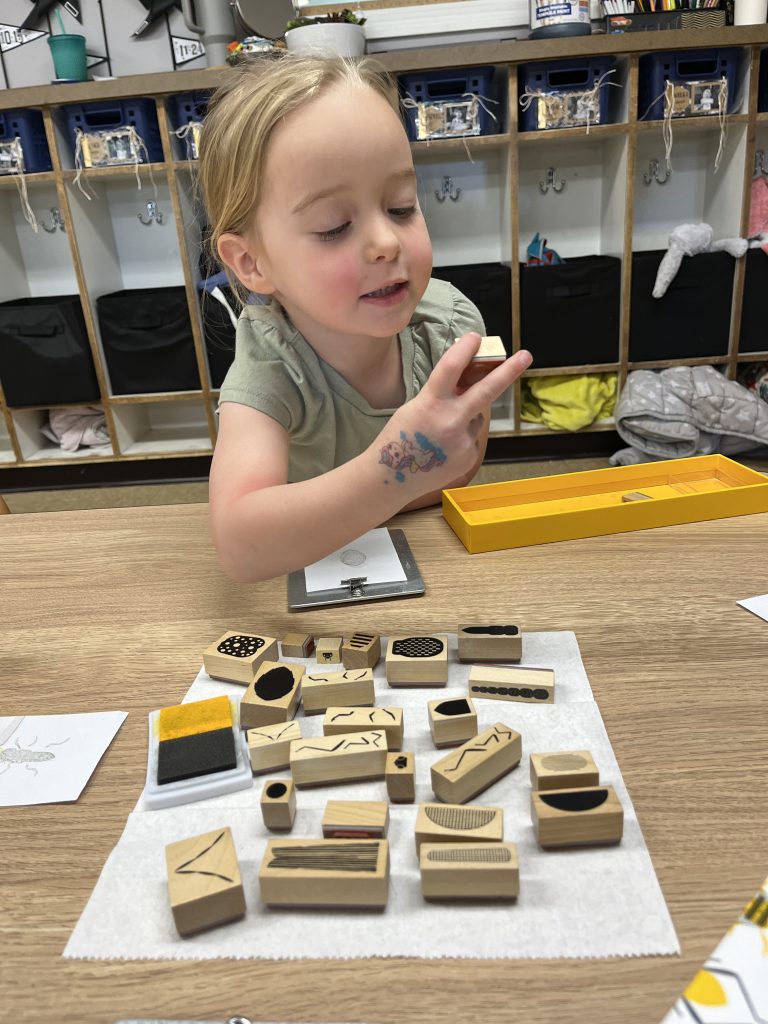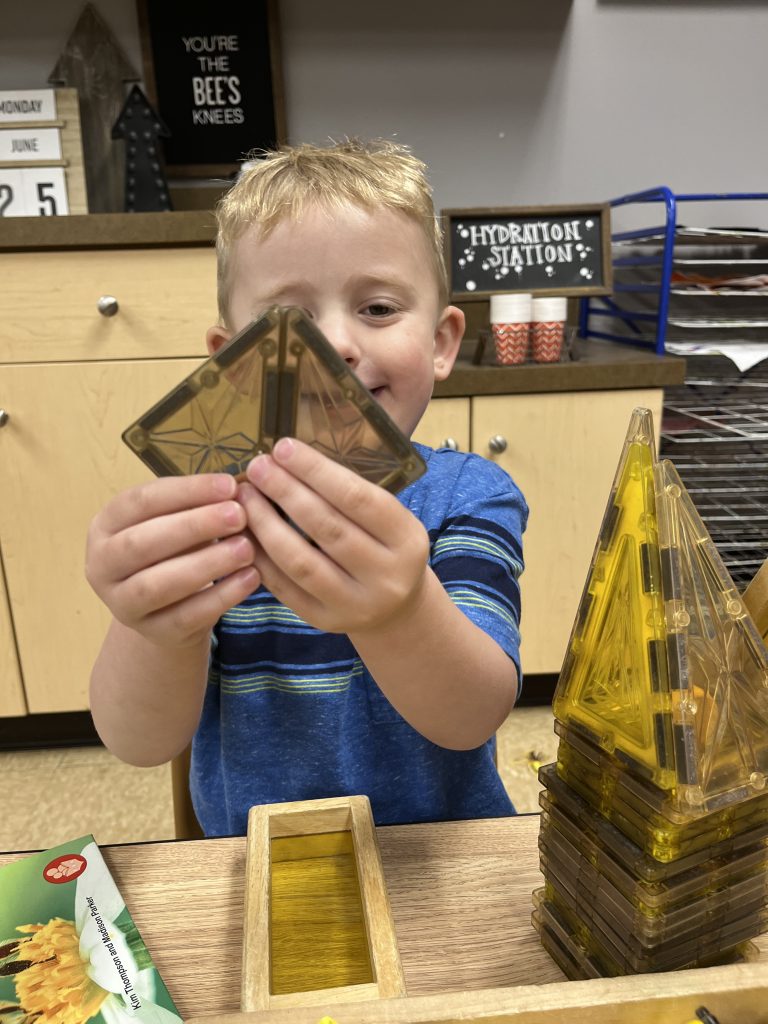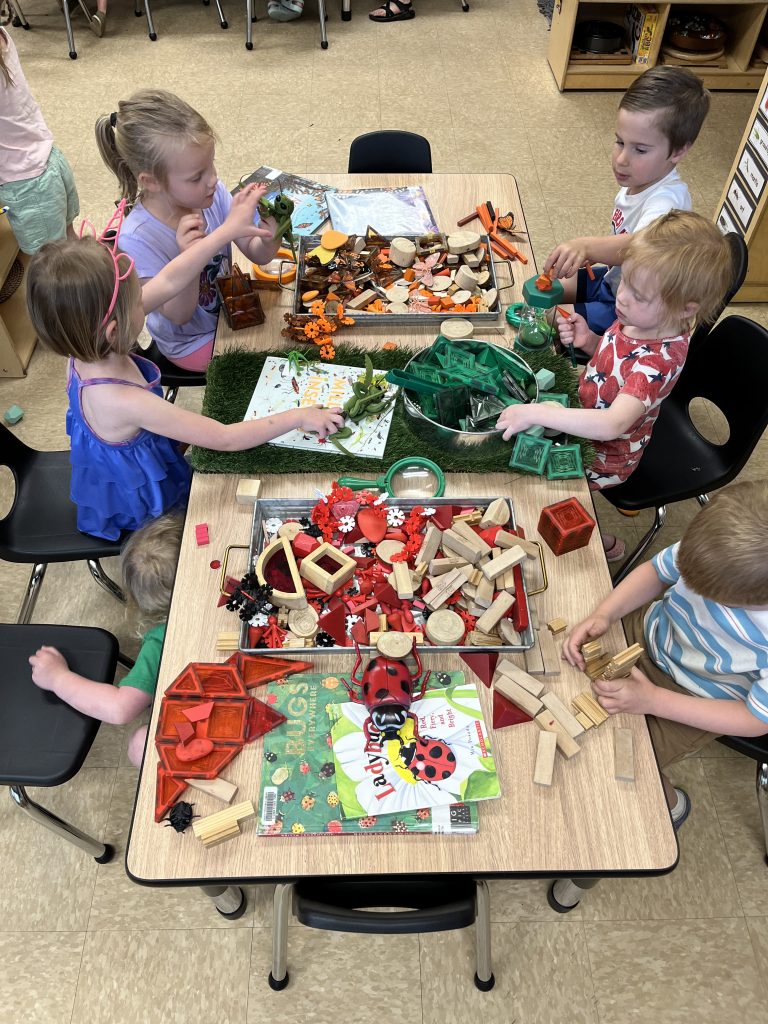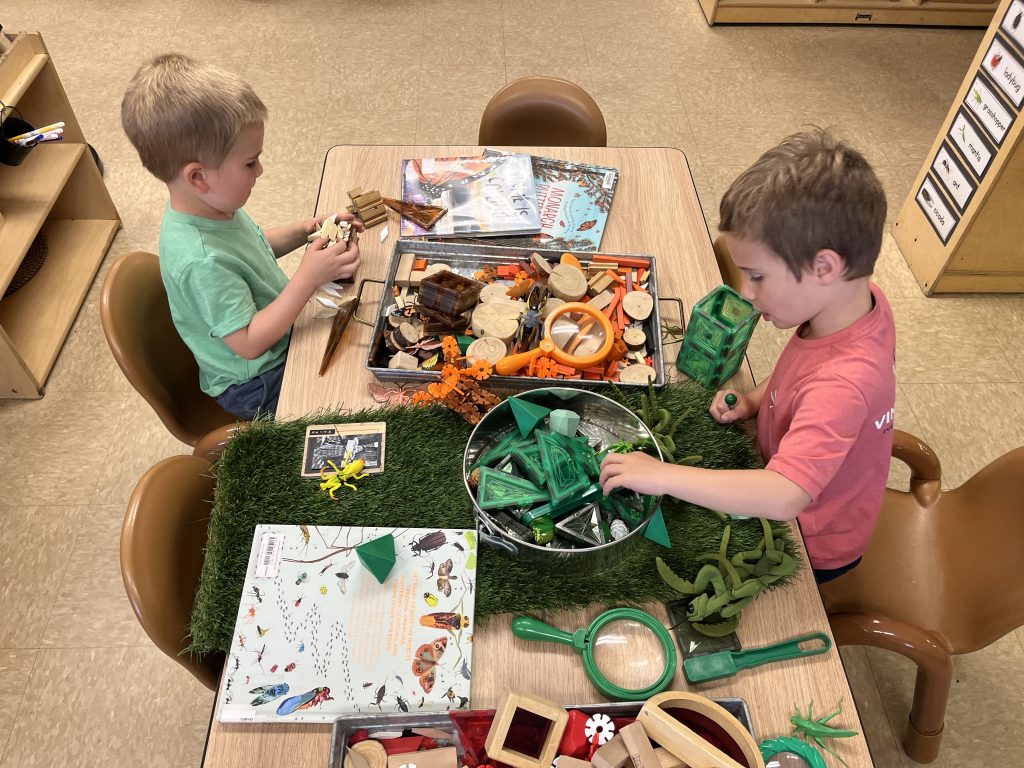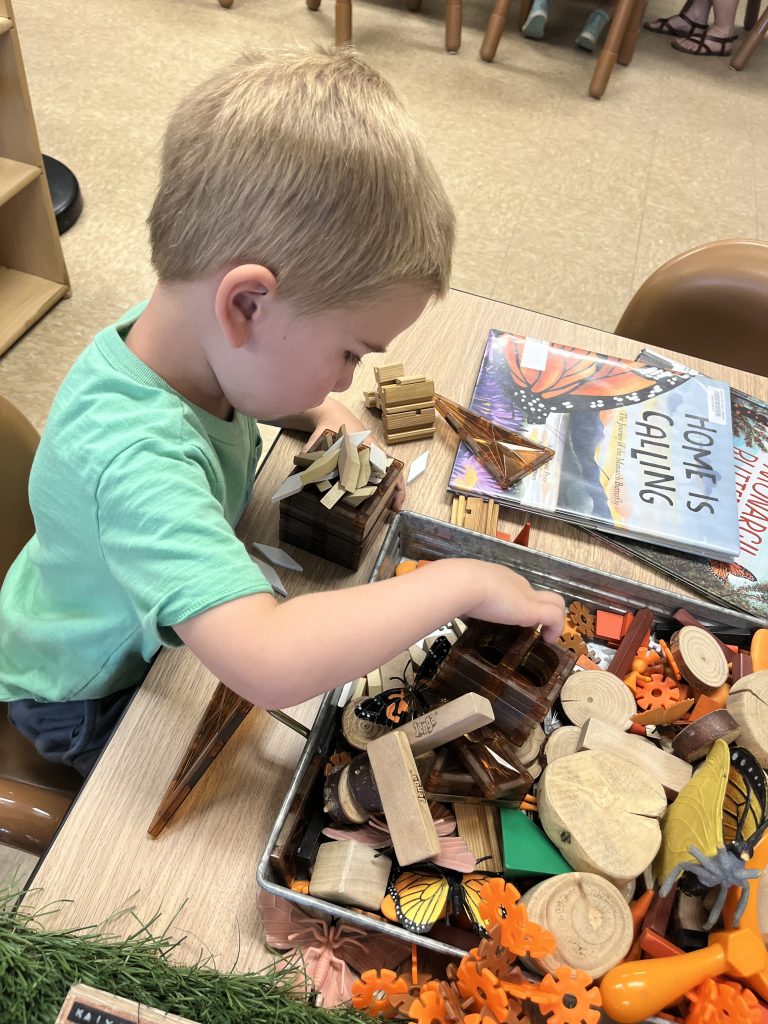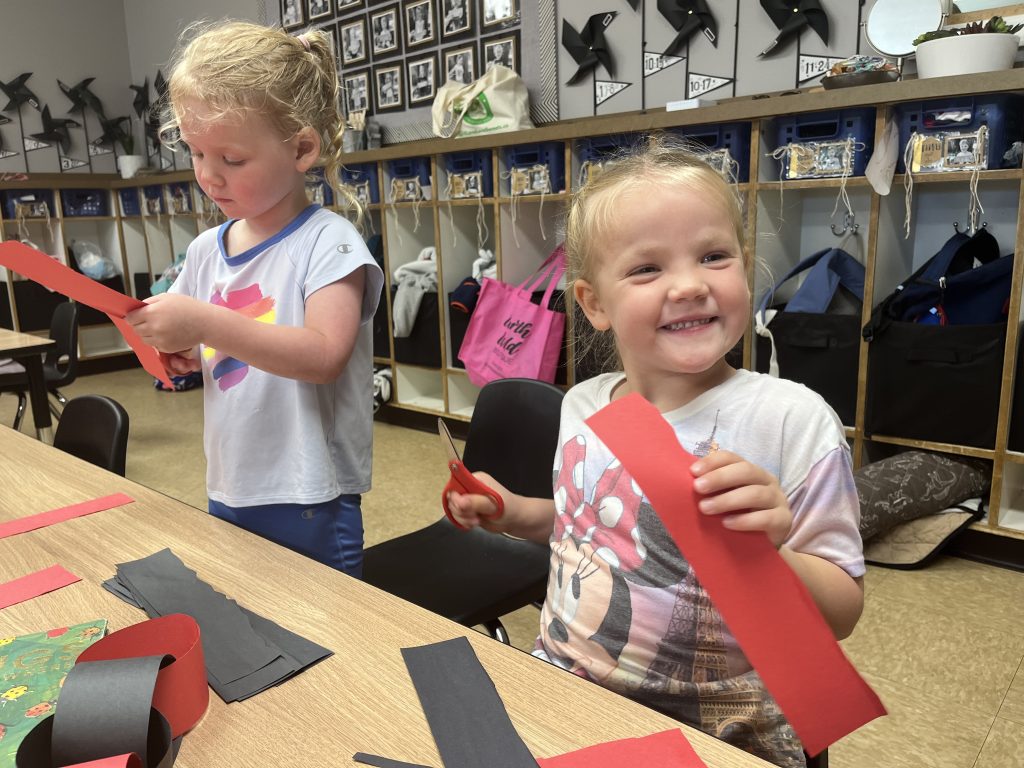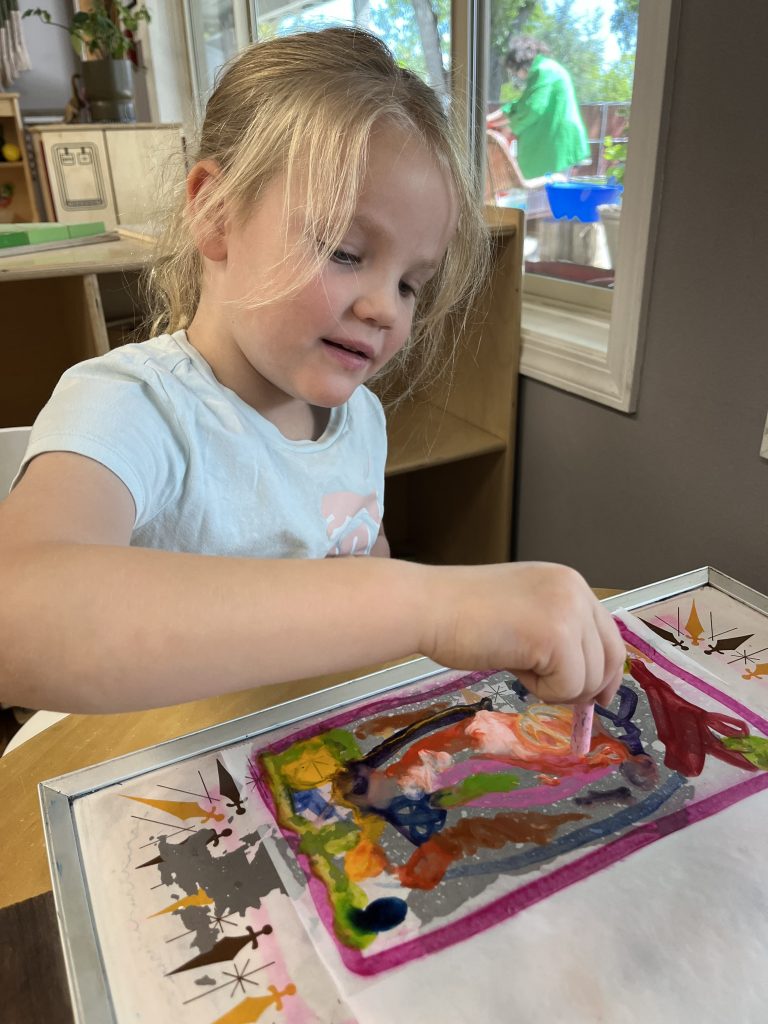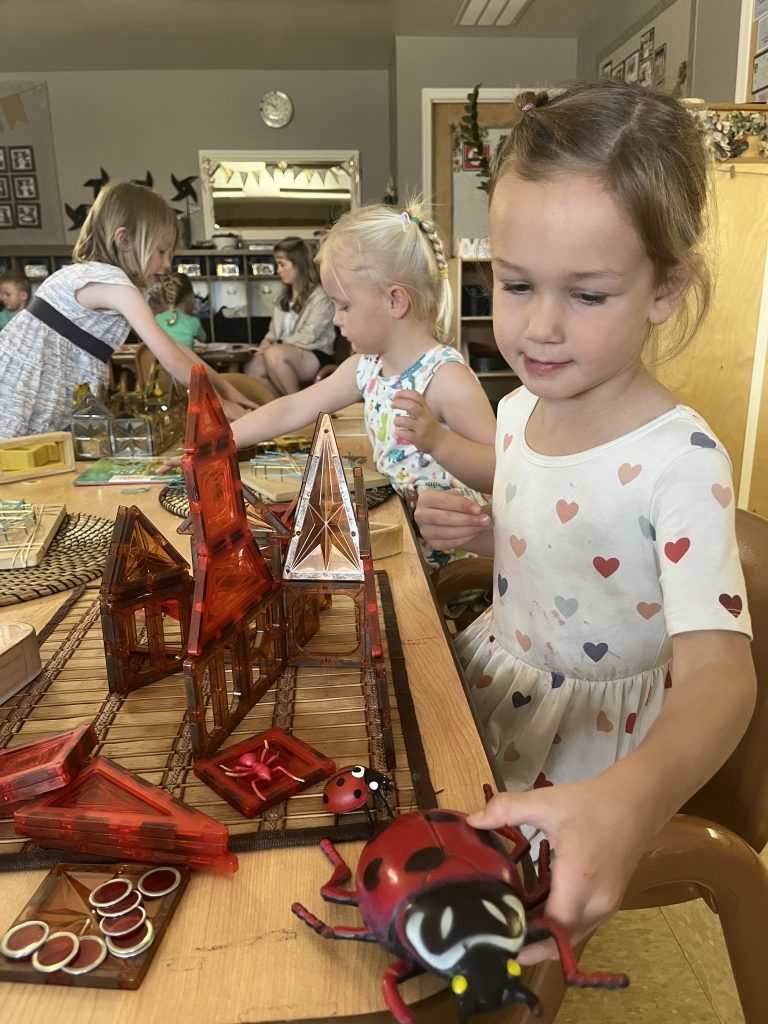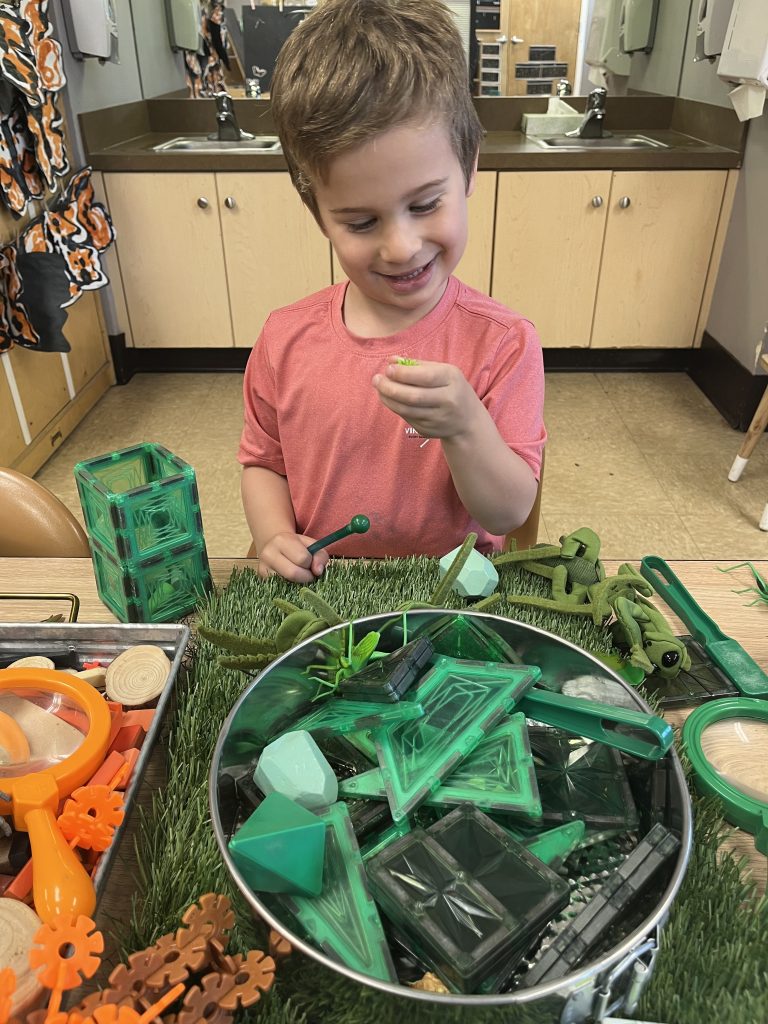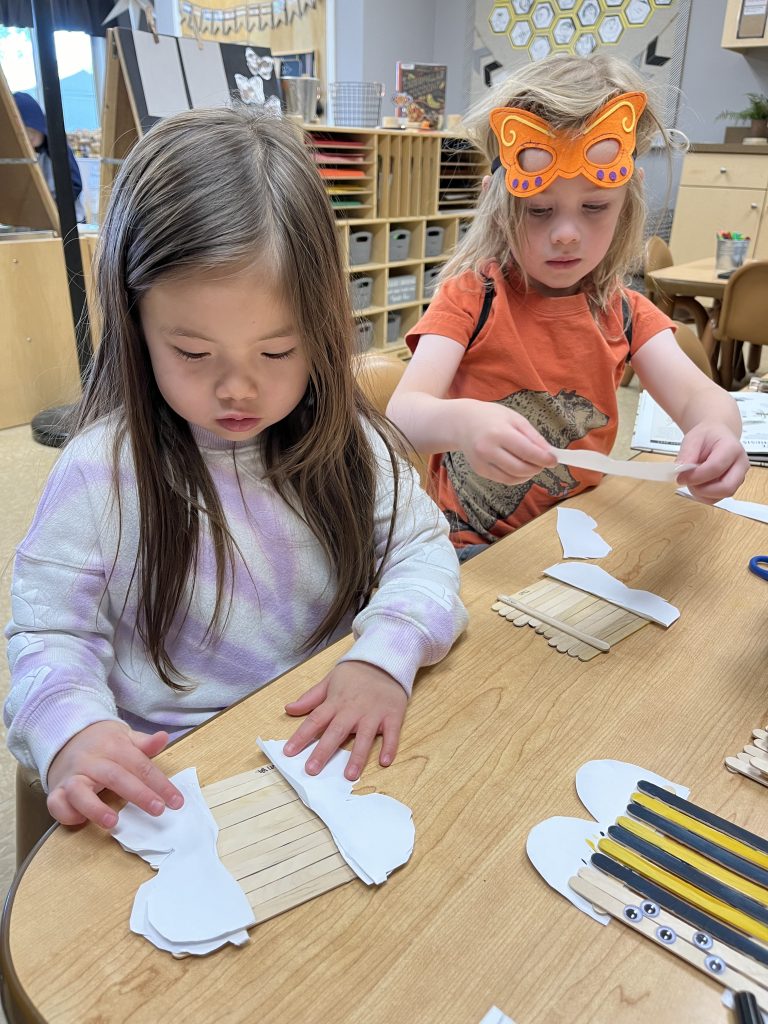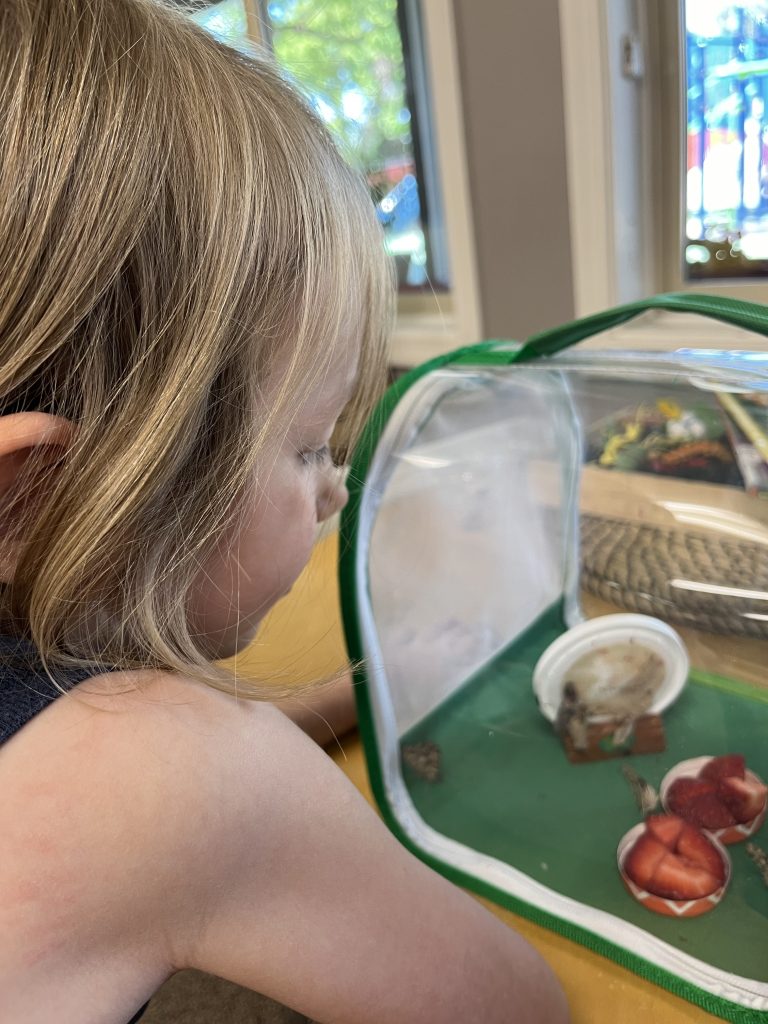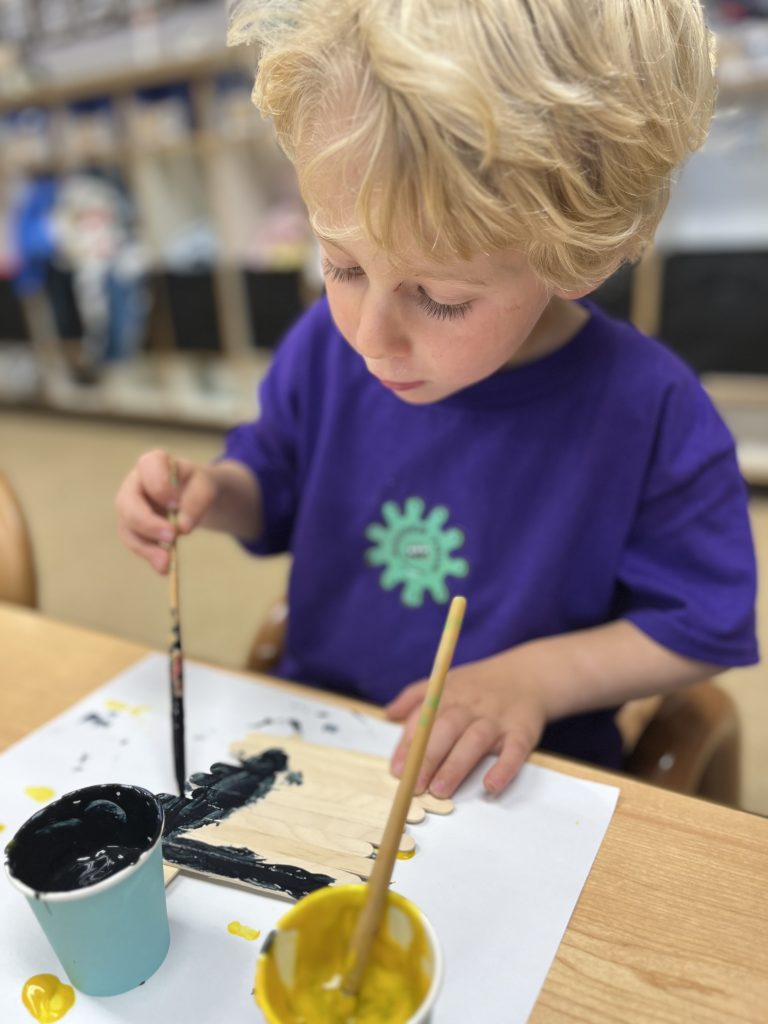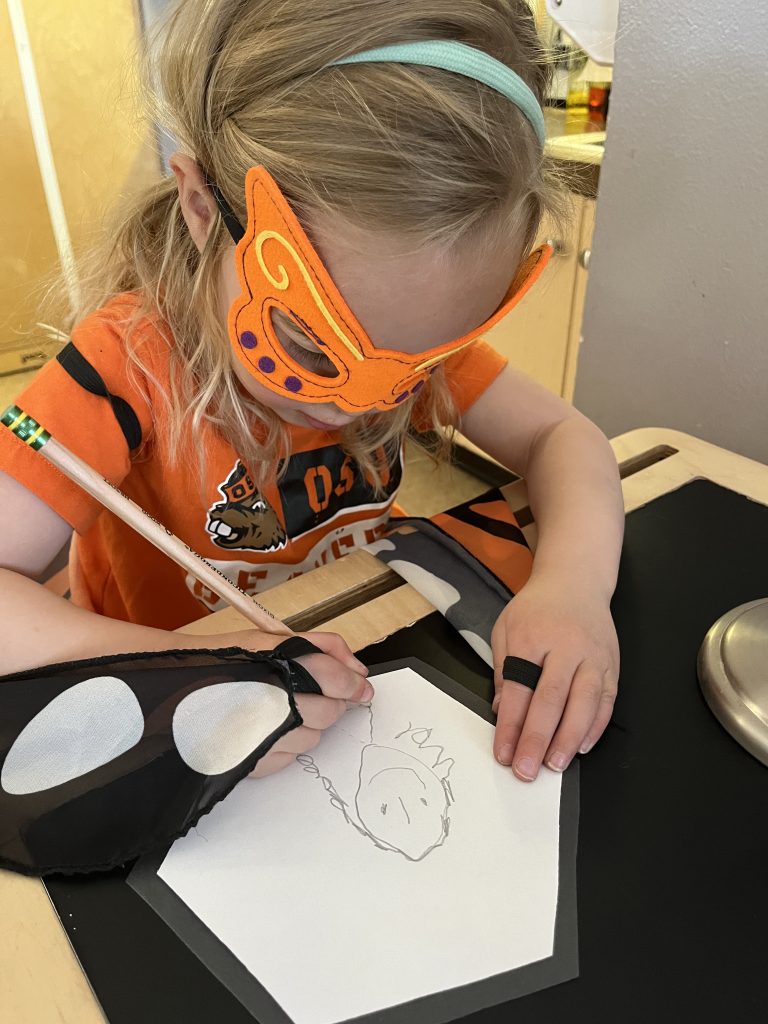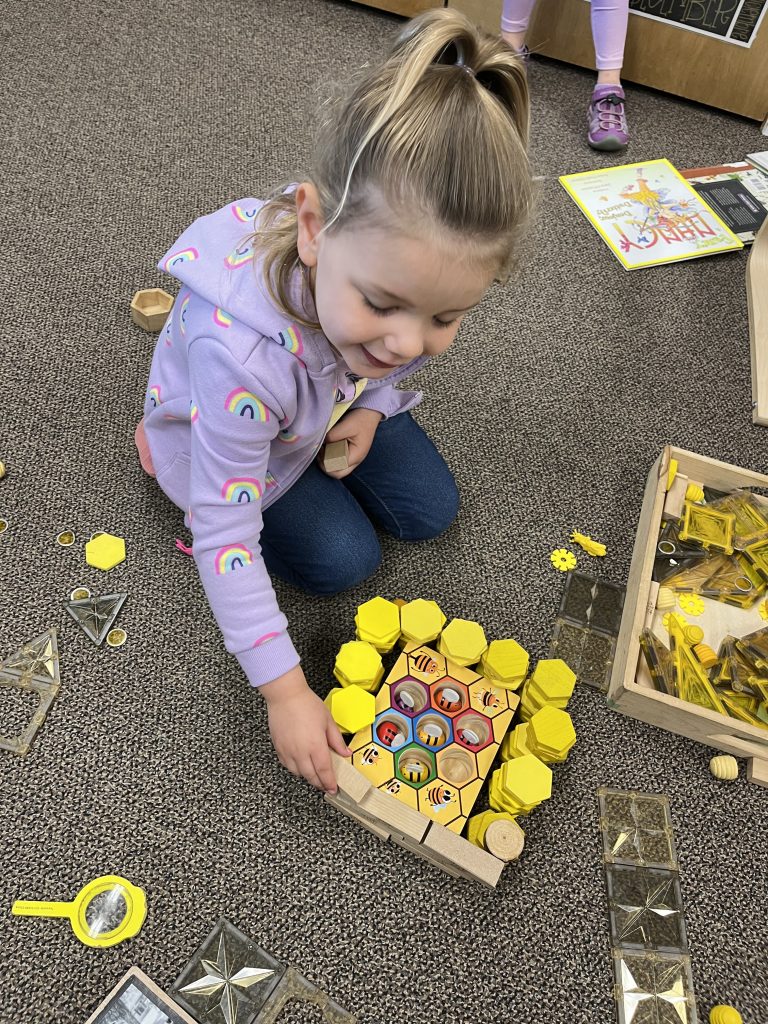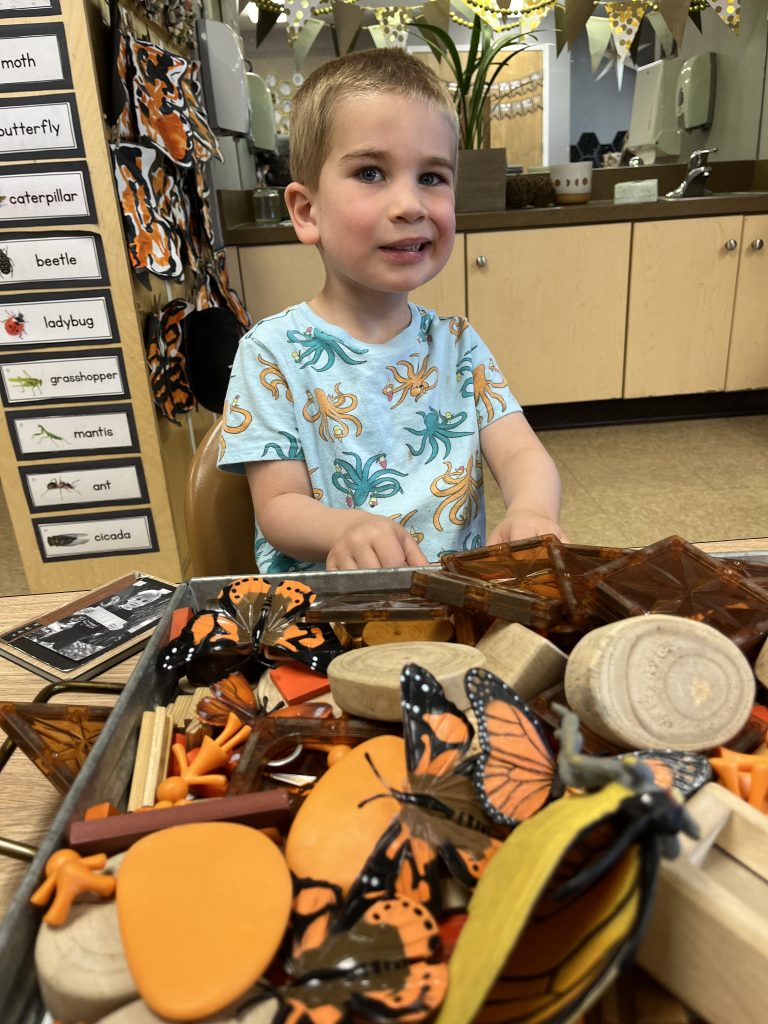Dear Brancher families,
June has come and gone…just like that! Not only did we anticipate summer and the beautiful weather, but we also anticipated yet another fun month of learning, discovering, and exploring!
As we embarked on our INSECT and ARACHNID unit, hardworking, busy, buzzy BEES were our first area of study, and we talked about fascinating things! We discovered that bees know how to dance! When a bee finds a ‘sweet spot’ to collect nectar and pollen, it will wear its dancing shoes and ‘cut-a-rug’. As the forager bee dances, she tells the other forager bees where to go. Fascinating, to say the least! Throughout our bee week, the Branchers created popsicle stick buzzy bees (including their two sets of wings and 5 eyes), hexagon-shaped self-portraits, bubble wrap honeycomb printing, and put our taste buds to work with our honey taste test!
DRAGONFLIES and DAMSELFLIES, Oh My! It was amazing to witness how quickly the Branchers picked up on the differences and similarities between the two insects! Although they are extremely similar, the Branchers were able to discover that there are three main differences in their eyes, wings, and body size. Before we knew it, the Branchers were spotting the winged wonders and showing us examples of dragonflies and damselflies around the classroom and within books provided in the library. It was so great to see the children focus on the smallest details that made them both similar/different. With any discovery and wonder, an art activity was a must! Each Brancher created a stained glass winged wonder using a warming tray, parchment paper, and crayons!
Next on our insect exploration…LADYBUGS (aka ladybird beetles)! During our outdoor investigations, we discovered ladybugs out by the Willow Tree. Ladybugs are quite interesting, mainly because they have such unique life cycles. Fortunately, we could watch this lifecycle happen before our eyes! While exploring the playground, each Brancher put their searching skills to the test as they looked for eggs, larvae, pupas, and even the real deal ladybugs! To finish out our ladybug discoveries, we made paper chains. Using red and black strips of paper, each Brancher could create a chain-colored pattern of their choice. Many chose single-colored patterns (A, B), while others switched it up and went with double-colored patterns (A, A, B, B). We enjoyed observing their great patterning and fine motor and scissor skills too!
No insect unit would be complete without growing our very own BUTTERFLIES! Throughout the month, we observed the changes our five caterpillars made as they ate and ate, molted and molted (five times, to be exact) before becoming a chrysalis. Patience was required as the ‘metamorphosis’ magic happened inside each chrysalis. We had five very healthy and beautiful Painted Lady Butterflies when the anticipated wait was over. The Branchers looked in wonder as they saw the butterfly’s wings wet and folded as they emerged from their now empty case. Gradually spreading and flapping their wings, each butterfly could pump blood through its veins throughout their four wings. Building wing strength builds an appetite, so something sweet was in order. Using its proboscis (straw-like mouthpart), each Painted Lady sucked up the sweet juice from a strawberry as the Branchers watched with amazement. Before long, our butterflies were ready and able to spread their wings and took flight as we released them. Such a wonderful sight to see!
Next up…SPIDERS! A common misconception about spiders is that people often mistake them for insects. As the Branchers discovered, spiders are not insects; they are ARACHNIDS! We learned that insects have six legs and three body parts, whereas an arachnid has eight legs and only two body parts. These distinctions classify them to be different species. After discovering and discussing the spider’s characteristics, we learned some interesting facts about spiders, such as spinning webs. We found that a spider has many uses for its ‘silk.’ Ask your Brancher if they can share how a spider can use their silk. Before moving on to the next insect, we had to create our arachnids! Fine motor skills were a must to generate each arachnid leg. With no surprise, the Branchers proved they were up for the challenge as they ‘accordion folded’ each strip of black paper. Eight accordion legs and eight googly eyes completed the silk-spinning spinneret headbands!
Next up, we studied underground to discover wonderful WORMS! We learned that worms aren’t considered insects because they don’t have six legs. Instead, they use tiny hairs on their body to move around. We also learned that earthworms have FIVE hearts! After learning some information about worms, we got hands-on in our study by introducing real worms for the Branchers to hold and measure in the sensory table. No topic of study would be complete without some art and some science! So, each Brancher water colored their earthworm so we could hang it up in our classroom. After learning so much about worms, we decided to talk about a tastier worm. With the help of gummy worms, we learned that it would grow bigger when we soaked a gummy worm in water! The best science experiments included tasting, so each Brancher got to try one gummy worm. Studying science has always been a fan favorite in the branch room!
Wow! What a month! Observing how the Branchers have absorbed and retained so much new information regarding this unit has been so much fun! However, the best is yet to come as we explore SPACE and the PLANETS. July is bound to be ‘out of this world’!
-Ms. Heather & Ms. Gracen

